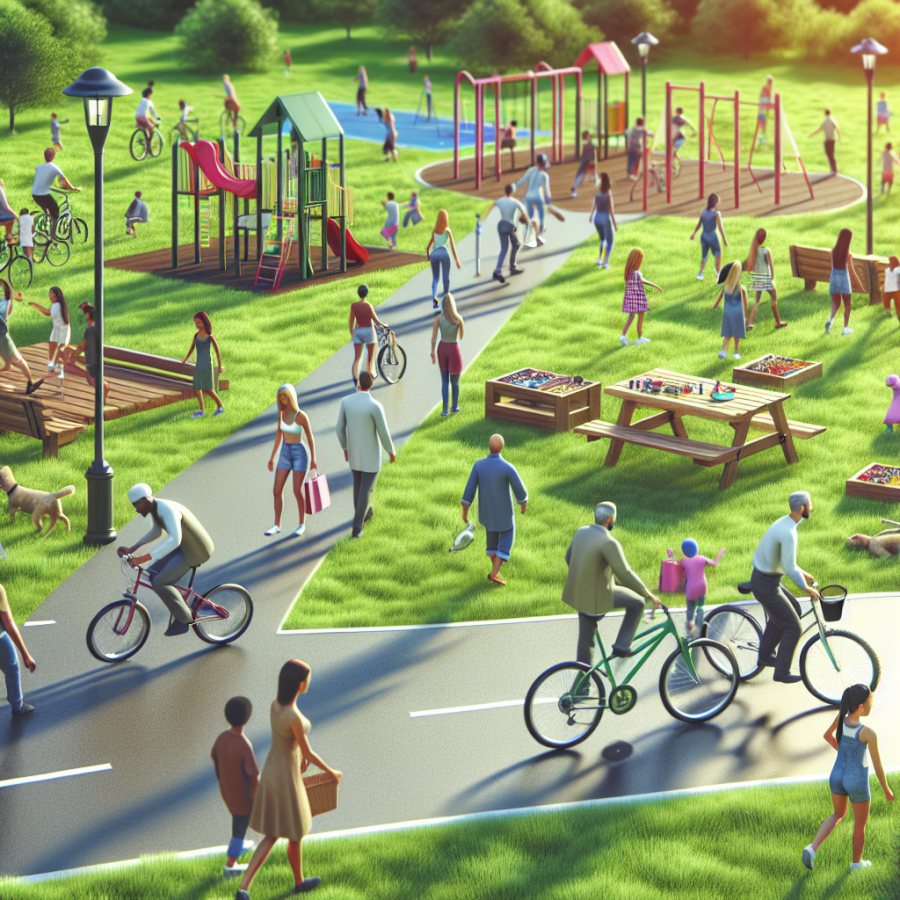Unveiling the Multifaceted Benefits of Recreational Activities in Neighborhoods
Recreational activities in neighborhoods foster a spirit of community, offering an array of benefits for residents ranging from health and wellness to social engagement and community development. This article delves into the multifaceted benefits recreational activities bring to neighborhoods, painting a picture of importance that goes beyond mere recreation.
Neighborhood recreational activities offer numerous health benefits. Participating in sporting activities, community yoga classes, or neighborhood health clubs, for instance, improve physical strength, cardiovascular health, and flexibility. Regular physical activity, as proven by several studies, wards off numerous diseases including heart diseases, diabetes, and obesity. It also helps improve mental health by lowering stress levels, improving mood, and encouraging a general sense of well-being. Recreational activities are thus a gateway to a healthier lifestyle, setting the path for enhanced fitness and longevity.
Equally important is the role of neighborhood recreational activities in promoting social interaction and building stronger communities. Participating in shared activities favors community bonding, and helps flatten social hierarchies, as everyone is an equal participant in the fun. This results in greater community cohesion and unity, fostering friendships and positive relationships among neighbors. These relationships, in turn, create a sense of belonging, reducing feelings of isolation, and contributing to overall mental well-being.
Moreover, neighborhood recreational activities serve as platforms for individuals to learn new skills and develop new interests. Whether it's mastering a new sport, learning a new craft in the local club, or cultivating a green thumb at the community garden, these skills not only promote personal growth but also instill a sense of accomplishment and self-esteem in participants.
Recreational activities also greatly contribute to community development. Parks, community centers, and other spaces used for recreational activities add aesthetic value to the neighborhood, making it a more appealing place to live. Increased use of these spaces reduces instances of vandalism and neglect, thereby contributing to the safety of the neighborhood. Moreover, these activities often lead to volunteerism and other forms of civic engagement, encouraging residents to better their community and promote its overall welfare.
Finally, recreational activities play an important role in the development and well-being of children and youth. They offer a safe space for structured play, essential for children's physical and mental growth. Participating in organized sports or other recreational activities helps kids learn essential life skills like teamwork and healthier coping mechanisms for stress and anxiety.
In totality, recreational activities offer a wealth of benefits to neighborhoods.
Evaluating the Positive Effects of Community Recreational Programs
Community recreational programs play a critical role in fostering bonds, contributing to health and wellness, promoting societal growth, and improving the overall quality of life. Increasingly, communities are recognizing their positive effects and investing in implementing these programs. This section aims to evaluate the positive effects of community recreational programs from various perspectives including health, social, environmental, economic, and individual.
From a health perspective, community recreational programs provide opportunities for physical activities. These activities can be instrumental in reducing obesity rates, controlling diabetes, decreasing the prevalence of heart disease, and improving mental health. Engaging in activities like swimming, hiking, or participating in sporting events can effectively combat a sedentary lifestyle, which is known as a significant risk factor for various health issues. Also, some studies suggest that engaging in community recreational activities can have a positive impact on mental health by reducing symptoms of anxiety and depression.
Socially, community recreational programs promote a sense of belonging and unity. They provide a platform for individuals to connect, interact, and build relationships, which is fundamental for social cohesion. They also foster a sense of community pride and identity, enhancing social stability, reducing crime rates, and encouraging community participation in local activities and decision-making processes. Recreational programs also serve as excellent tools for bridging cultural and generational gaps.
Community recreational programs are beneficial environmentally as they often encourage preservation, conservation, and appreciation of the natural environment. They can play a pivotal role in creating awareness about environmental issues and promoting sustainable behaviors among community members. Plus, their aesthetic value can significantly contribute to local biodiversity, improving the ecological health of the region.
From an economic standpoint, community recreational programs can stimulate local economies. They can increase property values, attract tourists and new residents, create job opportunities, and stimulate local business growth. This financial boost ultimately leads to an increased community investment and a more robust local economy.
On an individual level, community recreational programs empower participants by fostering life skills development. Through participation, individuals can develop essential skills such as leadership, teamwork, problem-solving, and time management. They also help children and teenagers develop confidence and self-esteem, provide adults with stress relief, and offer elders social interaction and physical stimulation.
Furthermore, community recreational programs have the potential to address social issues such as delinquency, drug use, and isolation. They provide outlets for young people, offer constructive and healthy activities, and stimulate interaction among various age groups.
Overall, the positive effects of community recreational programs are extensive and influential.




